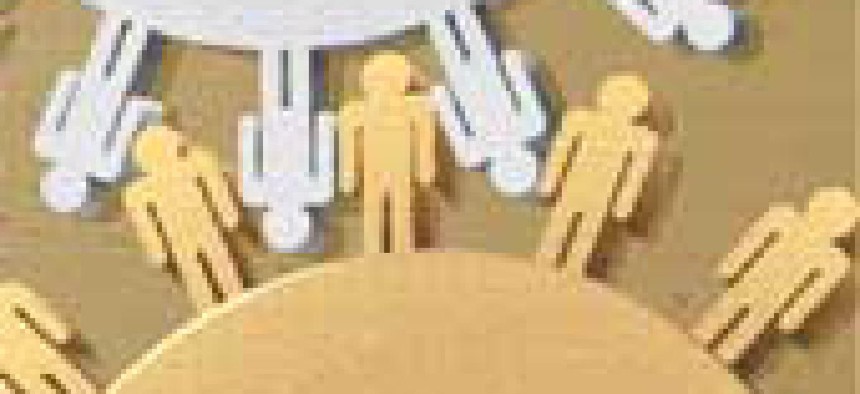The perfect fix

Internal IT collaboration at HUD cuts chaos.
Agencies are complex organizations, and internally, those organizations break down into groups. Each group has a focus ? acquisition, information technology, finance ? that lends itself to isolation.But some agencies are learning the value of breaking through that tunnel vision and bringing organizations together to collaborate on agencywide issues. The Housing and Urban Development Department offers a good example. Its leaders attribute dramatic improvements on government score cards to teamwork among management.The collaboration can bring business opportunities for contractors, too. Some officials point to IT as the key to making collaboration a routine part of doing business so that the next generation of leaders will be more likely to maintain the interaction. In addition, teams can identify problems and potential solutions more quickly than when departments don't talk to each other.HUD is now off the Government Accountability Office's high-risk list for the first time since 1994 and scores well on the President's Management Agenda score cards, having moved from red to green in financial management and e-government last year, said Chief Information Officer Lisa Schlosser. The score cards use a traffic-light color ranking, with red meaning the agency is failing to meet its goals and green meaning it is succeeding.At HUD, a core group meets early each Monday morning for a free-ranging discussion about challenges and needs. The group includes Schlosser, Chief Financial Officer John Cox, Chief Acquisition Officer Joe Neurauter and Assistant Secretary Keith Hudson. Other agency leaders attend when necessary."There's no agenda. There's no plan," Neurauter said. "We just start talking and things come up. It's very free-wheeling.""Getting all these areas working together is how things get done," said retired General Services Administration official Marty Wagner, who moderated the group in a panel discussion at the recent IRMCO conference in Williamsburg, Va.Such internal collaboration ? common in the private sector ? is relatively rare in government, said Bob Guerra, a consultant at Guerra Kiviat. One reason for the disparity is that every organization in a company has the same overarching goal to increase profits. But in government, organizations often work toward different ends."That's not to say it can't work, it's just going to be a lot more difficult," he said. "It has to be something everybody really, really focuses on."Guerra attributed much of HUD's success to Schlosser's leadership. The approach seems to be working. One group member can enlist the aid of another in completing a task that cuts across functions. "Instead of something taking six weeks, it can take 30 minutes," Schlosser said.HUD has some advantages, however. Unlike a multifaceted agency, such as the Energy and State departments, HUD has a single mission. That makes it easier to turn everyone's attention to the same goals.Individual attitudes also make a difference, and not all agencies have a culture that would support such structured interaction. An official wouldn't even have to actively oppose it to sabotage it. If a key player such as the CIO or CFO simply makes information sharing a low priority and rarely takes part, the effort's effectiveness would be undermined, Hudson said.Guerra said that in such cases, the holdout may eventually change if others in the agency take part and succeed. "If you do it long enough, sooner or later the fourth guy's going to say 'I'm on the outside looking in. They're getting a lot done without me,' " he said.When it works, as it does at HUD, the effect filters down to the lower ranks, too, Cox said. "At the staff level, they're hungry for the collaboration," he said. "They've come up against walls before."Agencies that try similar things should not expect all the meetings to be easy, Cox said. "We don't always agree on everything," he said. But because of the professional and friendly relationships among the core group, "when we don't, it doesn't turn into beating heads together," he said.To institutionalize such collaborative practices, Hudson argued for the importance of implementing technologies that facilitate collaboration. "No- body is going to come in and say, 'I want to rip that out and go backwards,' " he said.The group said collaboration was essential in developing a computer system to reduce HUD's overpayments of subsidies to low-income recipients. The system, developed with help from the Social Security Administration and the Health and Human Services Depart-ment, won IRMCO's team award for the year.

Associate editor Michael Hardy can be reached at mhardy@1105govinfo.com.

Illustration by Mark Stay
Associate editor Michael Hardy can be reached at mhardy@1105govinfo.com.
NEXT STORY: Sun shines again after anniversary sale flap

